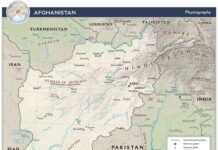Context

The talk about the military operation in North Waziristan has picked up feverish pace. This is not the first time, in the last decade, and historically, Waziristan has been the bone of contention several times before.
The attempt here is not, as many other assessments are doing, to name different locations along with the Taliban and Al-Qaeda leaders who may have been killed in Waziristan. Nor is the emphasis on presenting the best tactical approach to conduct the operation. Rather the focus is on the less talked about dimension: how does the operation fit in the larger vision and strategy?
Analysis
Vision, Strategy And Tactics
Obviously, tactics and strategies are two different things, and are suppose to be connected to the larger vision. A vision is an ideal future state that an entity may be striving for. On the other hand, strategy lays out the best approach to accomplish the vision. Different tactics may be deployed in support of a selected strategy. However, too much emphasis on tactics, without consideration for the strategy and the grand vision is a sure recipe for failure. At the same time, the vision and strategy cannot be set in stone, as the reality is quite dynamic. Thus, to be successful, any shrewd strategist has to constantly adjust lofty goals to the ground reality.
Applying this logical structure to the present AfPak predicament presents an alarming misalignment between the vision, strategy and tactics. We have a vision that is dramatically disconnected with ground circumstances and reliance on tactics and strategies that have long outlived their utility.
Afghan Transition
One of the goals of the revised American strategy is to withdraw majority of its troops from Afghanistan by 2014 and shift most of the security responsibilities to Afghan forces. However, the Afghans have demonstrated scarce ownership for the nation’s defense and are more inclined on blaming almost all and everything on its neighbor: Iran and Pakistan. In an alert issued in February 2012, PoliTact had noted:
“The killing of western security personnel at the hands of Afghan troops is creating a dangerous environment for NATO operations in Afghanistan. US exit strategy is built on training and handing over the security affairs to Afghan forces by 2014. However, the recent events [green on blue attacks] have put the reliability of the future US strategy in Afghanistan in to question, which is increasingly perceived as not respectful of the Afghan culture.”
Around the time of the Quran burning incident, Martine van Bijlert of the Afghanistan Analysts’ Network wrote in an analysis, “The demonstrations are a combination of religious outrage, pent-up frustration and groups wanting to stir trouble”. “It is difficult to predict how bad things will get; this will depend largely on who manages to control – or hijack – the expressions of anger.”
The crux of the matter remains; who has the upper hand in this conflict. If Taliban were to be decisively beaten militarily, the achievement of the political solution would have been much easier. However, Afghanistan has never lent itself to such easy formulations. In absence of this, one would assume that one or the other party would move towards compromise. Although they have gestured, neither NATO nor Afghan Taliban appear willing to do that. The Qatar dialogue process lies in ruin, with the continued insistence on military tactics to bring warring parties to the negotiating table.
Eliminating Safe Havens
The other goal of the new vision was to prevent Afghanistan from ever becoming a safe haven for the extremists. The performance of the campaign against terror in this regard is checkered at best and depends on the narrative adopted. Yes, the highly visible goal of eliminating the Al-Qaeda head honchos has been achieved but they have also been replaced.
The war has spread to many new corners. In addition to Afghanistan, many new safe havens have popped up all over the map, to include FATA. Sectarian and ethnic tensions and fault lines are threatening many a nation-state in the region. The balance of conservative, liberal and religious forces has been tilted almost to the tipping point. Whereas at the start of the war against extremists, the equilibrium was securely in favor of the liberal and secular forces.
Additionally, it’s not clear where the campaign ends. After Taliban, Pakistan still has to take care of Kashmir related jihadist, such as the LeT, the perpetrators of Mumbai attack. On the other hand, the classification between good versus bad extremists has reemerged with increased relevance in the case of Syria.
Regional Approach
With enhanced western concerns over Iran’s nuclear program and the level of its involvement in Syria, it is unlikely the country will cooperate in Afghanistan. US and Pakistan ties are only beginning to emerge from the shadows of the Mohmand tragedy. In short, another premise of the strategy focused on regionalism, lies flat on its back.
The global support for the Afghan war is also waning. The US-Russia reset has not turned out what it was hoped, especially on matters related to Syria and the missile defense system. On the other hand, the US continues to build up its military presence in the Pacific, irking China. Not only this, the global recession is taking a serious toll on the American and the European economies, with the fate of European Union marred with uncertainty. This only ups the pressure to quickly draw down in Afghanistan, as the NATO allies loose the appetite for perpetual conflict there. Moreover, US itself wants to shift more of the focus to the pacific realm.
Conclusion
It is in this context that we should evaluate the North Waziristan operation. Even if it actually does materialize this time, it will only buy temporary respite and will cause more internal strife in Pakistan. The safe havens will move and emerge somewhere else. The operation is likely to widen the war and engulf Pakistan more fully, and start another spiral of military operations that can last another decade, with no clear victors.
This begs the question; if the tactics and strategies being employed are failing to produce the desired outcomes, why continue to use them. Perhaps, the stated vision is not real, as Sun Tzu wrote in the Art of War, all war is based on deception.



